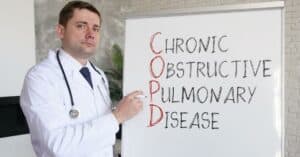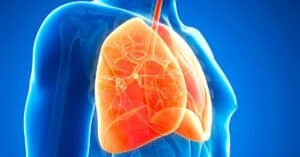Chronic obstructive pulmonary disease (COPD) is a progressive form of lung disease ranging from mild to severe. It is characterized by obstructing airflow into and out of the lungs, making breathing difficult.
Emphysema and chronic bronchitis both fall under the category of COPD. Lung infection and COPD go hand in hand.
A person with COPD has narrowed airways and inflamed air sacs, making him or her more prone to lung infections, which are sometimes referred to as pneumonia.
Here are the facts you need to know about lung infection and COPD.
What is a Lung Infection?
Pneumonia, or a lung infection, occurs when bacteria, viruses, and sometimes fungi collect in a person’s lungs and begin to grow.
This causes the air sacs in the lungs to become filled with pus and liquid, making it more difficult for a person to breathe.
Symptoms include chest pain and/or a frequent cough that differs from the usual chronic cough associated with COPD.
Pneumonia and COPD is a serious combinations that should not be taken lightly. Damage from pneumonia can cause irreversible damage to lung tissue, with the most severe complication being a respiratory failure.
In fact, acute respiratory failure is one of the leading health concerns when a person with COPD develops pneumonia.
Can Lung Infections be Prevented?
Lung infection and COPD, while common, isn’t entirely unavoidable. However, you can take steps to protect yourself and your lungs.
Many people develop pneumonia after having the flu. Because of this, getting a flu shot is an important safety precaution that a person can take to reduce the chances of contracting pneumonia.
Frequent hand washing is also key, as is staying away from people who are sick.
Eating healthy and exercising are also great ways to strengthen your immune system, reduce your chances of getting sick, and also lower the risk of experiencing COPD exacerbations.
Signs and Symptoms of a Lung Infection
Symptoms of lung infection are very similar to COPD symptoms, which can make it difficult to diagnose.
Because of this, it’s important to be aware of the symptoms of a lung infection and how they differ from those of COPD.
1) Fever
Normal body temperature is typically around 98.6 degrees Fahrenheit but varies from person to person. An elevated body temperature, or fever, might be an indication of a lung infection.
In addition to an elevated body temperature, or a temperature over 100.4 degrees Fahrenheit, chills and shaking are other symptoms of a fever.
2) Increased Shortness of Breath
Experiencing shortness of breath is a common problem for people with COPD. However, if the shortness of breath gets worse, it could be a sign of a lung infection.
Additionally, rapid breathing and an increased heart rate may also be signs of a lung infection. Because of this, paying careful attention to your body and the severity of your symptoms is imperative in helping to catch a lung infection early on.
3) Changes in Mucus
If you notice that you are expelling more mucus when you cough or that it has changed, these could be symptoms of a lung infection.
When a person has a lung infection, their mucus tends to change color, have a thicker and stickier consistency, and sometimes will have a foul odor. Your mucus can tell you a lot about the state of your lungs.
4) Sharp Chest Pain
People with a lung infection typically experience a sharp, aching pain on one side of their chest that worsens when they breathe in deeply. This is called pleuritic chest pain.
It can also feel like a tightness or pressure inside of your chest wall. While pleuritic chest pain isn’t always indicative of a lung infection, it could signify another issue.
Sometimes pleuritic chest pain could be a problem with the lung or heart.
With any type of chest pain, it is important to seek professional medical attention immediately.
Managing a lung infection and COPD isn’t an easy task. However, knowing what to look for can help you catch an infection before it worsens.
If you think you might have symptoms of a lung infection, contact your primary care physician for an expert opinion. It’s always better to err on the side of caution when it comes to your health.

Christine Kingsley, APRN is the Health and Wellness Director at the Lung Institute where she focuses on providing helpful online resources for people looking for information on various lung diseases, breathing exercises, and healthy lifestyle choices. She advocates for holistic care that involves working with your doctor to explore all options including traditional and alternative care while focusing on diet and exercise as proactive measures.









